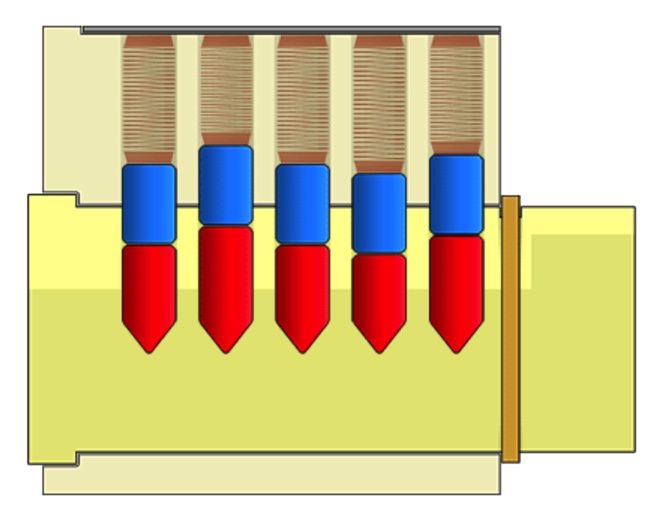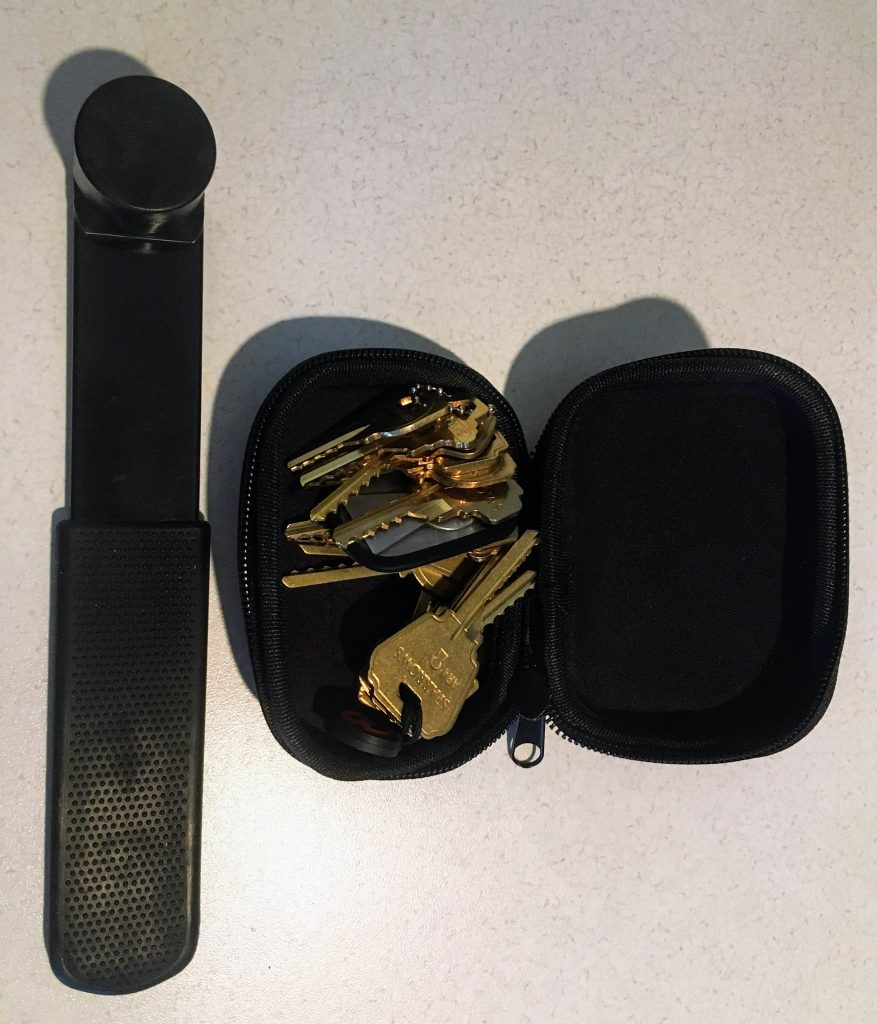
As I mentioned in this post, I have both a professional and personal interest in entry tools of all varieties, like lockpicks. In today’s post I’ll be discussing bump keys.
Before I get in to why I have them, I want to give you a Reader’s Digest version of what they are and how they work (when they do).


So, as pictured, when a lock works normally, as you can see in the first image the pins (blue/red) prevent rotation of the cylinder (yellow). When the correct key is inserted, the line where the blue pins meet the red pins (the shear line) aligns with the edge of the cylinder and allows the cylinder to rotate, allowing the internal mechanism of the lock (ie; the deadbolt) to be actuated, and thereby grants access to the person using the key.
Now that you understand that, since I don’t have a transparent lock housing, I’m going to defer to Nick Moore on YouTube for a demo on the mechanics of bumping:
So with all that in mind, as you can see in the lead image, you need several different keyways – meaning different shapes of keys. That’s probably the biggest downside to bumping – not only do you need a bunch of different keyways, you also need to select the right one for the lock you’re trying to bypass.

That said, there are some common keyways out there, and once you know what to look for, it’s pretty easy to identify which lock you’re working with and select the correct bump key for your application.
That’s the basic gist of bump keys – for more information, I’d encourage you to look around online – Deviant has a ton of resources on his site that’d be a great place to start, as would YouTube.
That’s all for now – look for more bypass/entry/lockpicking tools this week!
-T